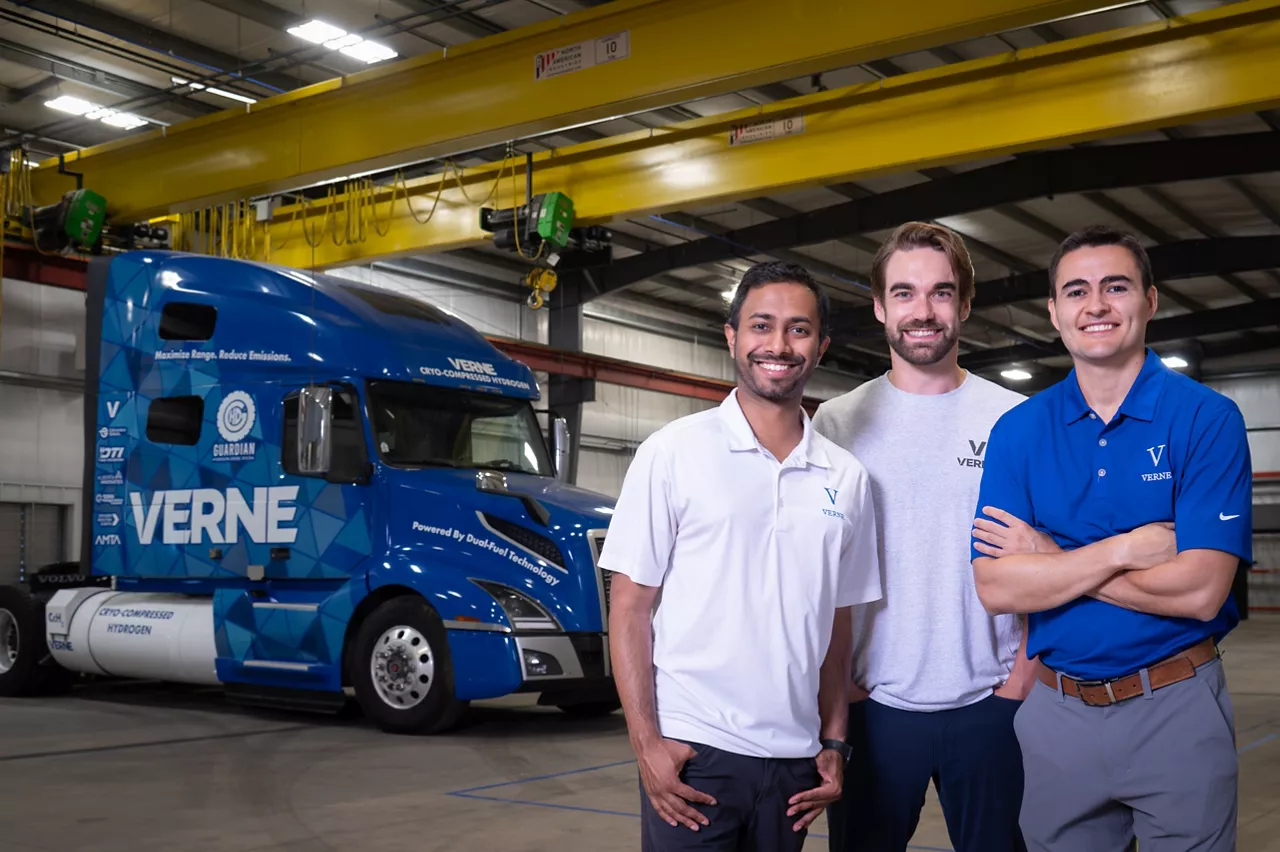The companies will develop and demonstrate cryo-compressed hydrogen nozzles and receptacles for heavy-duty truck refueling stations
San Francisco, California and Diez, Germany. Verne, a hydrogen technology platform startup, and ARTA, a global market leader in coupling and connector system solutions for over 50 years, have signed a collaboration agreement to jointly develop and demonstrate coupling and receptacles for cryo-compressed hydrogen (CcH2) truck refueling stations. This work will help ensure the required high-performance equipment is available for the cryo-compressed hydrogen trucking refueling network.
“ARTA’s team has extensive experience with cryogenic and pressurized hydrogen systems, a unique capability,” said David Jaramillo, CTO & Co-Founder of Verne. “Their proven track record and agile development capabilities make ARTA a great collaborator to develop the technology the market needs.”
Cryo-compressed hydrogen offers densities that are superior to liquid hydrogen (LH2) systems while avoiding boil-off losses. At a storage pressure less than 400 bar, CcH2 storage systems can reach hydrogen densities of 73 g/L, a 35% improvement relative to LH2 storage systems (54 g/L with minimal ullage) and an 87% improvement relative to 700 bar storage systems. This fundamental density benefit unlocks diesel-like performance across the heavy-duty sector, starting with Class 8 trucks. Verne has demonstrated multiple cryo-compressed hydrogen storage systems with various third parties, including commercial entities and a United States National Laboratory.
“Since our first contact, our cooperation with Verne has been inspiring and energizing to ARTA. We are happy to support Verne’s path towards a carbon-neutral transportation industry with our long-term experience in cryogenic and high-pressure coupling technology,” said Pascal von Keitz, Project Manager of H2 and Managing Director of ARTA. “The transformation of industries into a sustainable age must take place now. Verne and ARTA are a good match to quickly implement hydrogen solutions for the transport sector.”
In addition to achieving high-density on-board storage, Verne is now working with ARTA to demonstrate rapid refueling. The companies are collaborating to develop high-flow refueling coupling and receptacles for truck stations. The developed technology will allow for refueling a 500+ mile truck in less than 10 minutes. The companies will carry out demonstrations starting in early 2024.
About ARTA
Where critical gases or liquids are handled in a safe way, ARTA has been the industry’s partner for couplings and transfer systems since 1964. Starting with land-based logistics applications, ARTA’s portfolio has grown to cover couplings for all applications of global supply chains: From the sea to the sky, from cryogenics to high pressure. ARTA is a family-owned private company based in Diez, Germany. With subsidiaries and service partners all over the world, ARTA supplies renowned global players with reliable coupling systems for all kind of applications.
Company contact:
Pascal von Keitz, Managing Director of ARTA; info@arta.com
About Verne
Verne was founded in 2020 to develop the required high-density hydrogen platform for heavy-duty transportation. Verne’s platform can unlock zero-emission operations in sectors including trucking, mining, aviation, port vehicles and hydrogen distribution. Verne is financially supported by leading commercial entities, including Amazon’s Climate Pledge Fund, Caterpillar Venture Capital, and Collaborative Fund. Verne is also supported by Breakthrough Energy Fellows, the Department of Energy’s ARPA-E, and other agencies. For more information, please visit verneh2.com
Company contact:
David Jaramillo, CTO & Co-Founder; contact@verneh2.com


.png)


